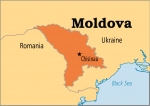
Moldova
Area 13,067 square mi (33,843 square km) Population 3.556 million 2014 Capital Chisinau Highest Point 1,419 ft (430 m) Lowest Point 6.6 ft (2 m) GDP $7.944 billion 2014 Primary Natural Resources lignite, phosphorites, gypsum. THE REPUBLIC OF MOLDOVA is the second-smallest former Soviet republic and the most densely populated, located in the borderlands between […]

Missouri
IN THE MIDWESTERN UNITED STATES, Missouri is the 19th state in terms of size of all the states. Its name is derived from a Native American word for “town of large canoes.” Missouri covers an area of 69,686 square mi (180,487 square km). A LANDLOCKED STATE, inland waters cover an area of 691 square mi […]
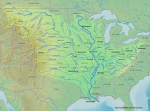
Mississippi River
MARK TWAIN begins the novel Life on the Mississippi by writing “The Mississippi is well worth reading about. It is not a commonplace river, but on the contrary is in all ways remarkable.” No better words can be used to summarize of one of the world's largest, and North America's greatest, river. The Mississippi River […]

Mississippi
KNOWN AS THE Magnolia State, Mississippi is bordered on the north by TENNESSEE, on the south by LOUISIANA and the Gulf of Mexico, on the east by ALABAMA, and on the west by lOUISIANA and ARKANSAS. The MISSISSIPPI RIVER, which flows along most of the western boundary of the state, is the origin of the […]

Minnesota
WITH THE EXCEPTION of ALASKA, Minnesota is the northernmost U.S. state, on account of the notch in its northern border, where Lake of the Woods abuts CANADA. Long known as the “Land of 10,000 Lakes,” the state is also known for its progressive society, common Scandinavian heritage, sturdy agriculture, advanced technology, and outdoor tourism. Minnesota […]
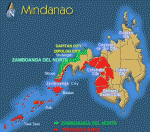
Mindanao
MINDANAO, THE SECOND-largest island (36,537 square mi or 94,630 square km) in the Republic of the PHILIPPINES, is one of the three groups of over 7,100 islands in the country, the other two being LUZON and Visayas. The Mindanao group to the south consists of some 400 islands. The island Mindanao, about the size of […]
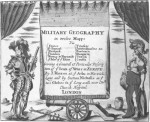
military geography
FROM EARLIEST HISTORICAL writings, the nature of warfare is shown to be a struggle for positional advantage at the tactical, operational, and strategic levels. Xenophon writing of the fate of the 10,000 Greeks fighting in Persia in the 4th century B.C.E., tells of the constant consideration commanders gave to all aspects of the terrain and […]

migration
MIGRATION IS referred to as “any residential movement which occurs between administrative units over a given period of time,” according to geographers Paul White and Robert Woods (1980). Other scholars have defined migration as the change in the center of gravity of an individual's mobility pattern. The destinations of the mobility flows need not, themselves, […]
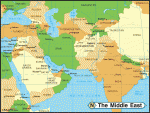
Middle East
THE TERM Middle East came to modern use after World War II, and was applied to the lands around the eastern end of the MEDITERRANEAN SEA including TURKEY and GREECE, together with IRAN and, more recently, the greater part of North Africa. The old Middle East began at the river valleys of the Tigris and […]

Mid-Atlantic Ridge
A MID-OCEAN RIDGE is a system of rifts and parallel mountain ranges or hills found in all major oceans. It is thought to be the site of upwelling new ocean floor material from Earth's mantle, from which ocean floors are gradually spreading out laterally. The Atlantic ridge is the most striking bottom relief feature of the […]
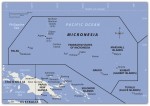
Micronesia
Area 271 square mi (702 square km) Population 104,000 2014 Capital Palikir Highest Point 791 m (2,595 ft) Lowest Point 0 m GDP $316.2 million 2013 Primary Natural Resources forest products, fish, marine products, deep sea minerals. MICRONESIA CONSISTS of four Pacific island groups located between the Marianas and MARSHALL ISLANDS, 1,000 mi (1,600 km) […]

microclimates
MICROCLIMATES ARE climates of small areas, such as gardens, cities, lakes, valleys, and forests. A microclimate is an expression of the temperature, humidity, and wind within a few feet or meters of the ground. Such expressions exist because surfaces vary in their ability to absorb, store, or reflect the sun's energy, making some areas warmer […]

Michigan, Lake
LAKE MICHIGAN IS one of the five original Great Lakes, which are located near or along the border between the UNITED STATES and CANADA; a sixth lake, Lake Champlain, was added to the Great Lakes category in 1998. The Great Lakes are the largest group of freshwater lakes in the world, and Lake Michigan is the […]

Michigan
IN THE NORTH-CENTRAL UNITED STATES, Michigan is known as the Wolverine State. Michigan entered the Union in 1837 as the 26th state, measuring 490 mi (788 km) north to south and 240 mi (386 km) east to west. The total area of Michigan is 96,716 square mi (250,493 square km), making Michigan the 11thlargest state. Michigan ranks 8th in population. Bordering on […]

Mexico City
MEXICO CITY IS THE capital of the country of MEXICO. The city is located in the Valley of Mexico on the central Mexican plateau. The core of the city is comprised of the Federal District. However, the Mexico City metropolitan area goes well beyond the boundaries of the Federal District into the surrounding states. With […]
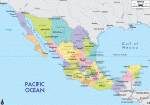
Mexico
Area 761,605 square mi (1,972,550 square km) Population 125.4 million 2014 Capital Mexico City Highest Point 18,700 ft (5,700 m) Lowest Point -33 ft (-10 m) GDP $1.283 trillion 2014 Primary Natural Resources petroleum, silver, copper, gold. OFFICIALLY KNOWN AS the Estados Unidos Mexicanos (United Mexican States), Mexico is a country in North America. It […]

metric system
LEGALLY RECOGNIZED in the UNITED STATES by the Metric Act of 1866 but devised by French scientists in a 1791 report to the French National Assembly, the metric system of measurement is the decimal system of weights and measures based on the meter, liter, and gram with the prefixes deci-, deca-, and kilo-. Originally not […]
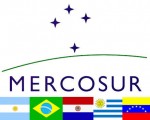
MERCOSUR
ON MARCH 26, 1991, the presidents of ARGENTINA, BRAZIL, PARAGUAY, and URUGUAY signed a common market agreement, the Treaty of Asuncion, that set the basis for the creation of the Common Market of South America (MERCOSUR, or Mercado Comun del Sur). MERCOSUR was the final step in a long struggle for economic and political cooperation […]

Mercator, Gerardus (1512–1594)
GERARDUS MERCATOR is the Latin name of Gerhard Kremer, one of the greatest geographers and cartographers, who lived in the 16th century. He was born on March 5, 1512, in Rupelmonde in the Flanders (now in BELGIUM), seventh child of Hubert and Emerentia Kremer. His father was a shoemaker. Thanks to his paternal uncle Gisbert […]
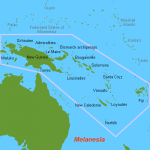
Melanesia
BEGINNING WITH THE FRENCH explorer Jules d'Urville Dumont in the 1830s, geographers have grouped the far-flung islands of the PACIFIC OCEAN into three great island worlds: Melanesia, MICRONESIA, and POLYNESIA. Melanesia, derived from the Greek words for “black” and “islands,” consists of those islands that extend from New Guinea in the northwest to the FIJI […]
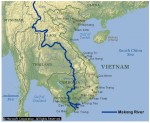
Mekong River
THE MEKONG IS the 12th-longest river in the world, traveling nearly 2,600 mi (4,200 km) from its source in the Tibetan plateau to its enormous DELTA in southern VIETNAM. It is the major transportation highway and supplier of life for most of Southeast Asia—with five cities over 100,000 and one-third of the populations of THAILAND, […]

megaliths
A GREEK-DERIVED word meaning “large stone,” megaliths refer to huge, uncut, or roughly cut boulders that people have moved to stand upright from the ground. Some megaliths, also called menhirs, have been in place for thousands of years, and the reasons for their positions are not fully known. They are found all over the world. […]

Mediterranean Sea
THE TRANSLATION of its Latin name (“in the midst of land”) indicates that the Mediterranean Sea is located between the landmasses of Europe, Asia, and Africa. Some students of geography may view the Mediterranean as a physical separation between Europe and Africa. Nothing could be further from the truth. The Mediterranean, in fact, has been […]

McKinley, Mount
MOUNT MCKINLEY is the highest peak in North America with a summit at 20,329 ft (6,196 m). Located in the 600-mi- (965-km-) long Alaskan Mountain Range, it is approximately 150 mi (246 km) south of Fairbanks, ALASKA. Mount McKinley is home to more than 650 species of flowering plants, as well as mosses, lichens, fungi, […]

Mauritius
Area 788 square mi (2,040 square km) Population 1.261 million 2014 Capital Port Louis Highest Point 2,732 ft (828 m) Lowest Point 0 m GDP $12.62 billion 2014 Primary Natural Resources arable land, sugarcane, tea, cattle, goats, fish. MAURITIUS IS AN island nation in the INDIAN OCEAN, located about 500 mi (800 km) east of […]
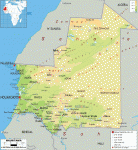
Mauritania
Area 397,955 square mi (1,030,700 square km) Population 3.970 million (2014) Capital Nouakchott Highest Point 2,985 ft (910 m ) Lowest Point 0 m GDP $5.061 billion (2014) Primary Natural Resources fish, iron ore, gypsum, copper, phosphates, salt. MAURITANIA IS LOCATED in Northwest Africa on the coast of the ATLANTIC OCEAN. It covers an area […]

Massachusetts
THE COMMONWEALTH of Massachusetts has a population of 6,379,304 (2001), more than half of whom live in the greater Boston metropolitan area. The largest city in the state is Boston (the capital), with a population of 589,141, and the smallest town is Gosnold, with a population of 86. It borders NEW HAMPSHIRE and VERMONT to […]

Maryland
“THE OLD LINE STATE,” covering an area of 12,407 square mi (32,134 square km) is located in the mid-Atlantic UNITED STATES and features a diverse geography, prompting the nickname “a miniature America.” Maryland is one of the more irregularly shaped states, with a long straight northern border and an irregular southern border that is delineated […]
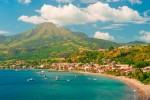
Martinique
MARTINIQUE, IN the CARIBBEAN SEA, is one of the four French overseas departments and regions. Temperatures range from 25 to 30 degrees C (76 to 86 degrees F) and the climate is tropical and humid. The dry season runs from December to May (careme). Drought is relatively common from February to April. During the rainy […]
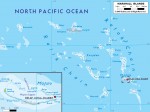
Marshall Islands
Area 70.7 square mi (181.3 square km) Capital Majuro Population 52,900 2014 Highest Point 33 ft (10 m) Lowest Point 0 m GDP $190.9 million 2013 Primary Natural Resources coconut products, marine products, seabed minerals. THE REPUBLIC OF THE Marshall Islands, formerly a component of the United Nations Trust Territory of the Pacific Islands (administered […]

market geography
MARKET GEOGRAPHY is a subfield of ECONOMIC GEOGRAPHY that focuses on the spatial nature of market forces. It derives its rationale from the central place theory, first argued in 1933 by German economic geographer Walter CHRISTALLER in his book on central places in southern Germany. Central place theory is fundamentally concerned with the patterns through […]
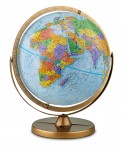
maps and globes
A MAP IS AN abstract representation of a selected set of features on or related to the surface of the Earth. The map reduces these selected Earth features to points, lines, and areas, using a number of visual resources such as size, shape, value, texture or pattern, color, orientation, and shape. Whereas aerial photographs and […]
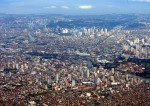
Manila
CONSIDERED TO BE the best harbor in the Far East, known as the “Pearl of the Orient,” Manila has been a commercial and cultural hub of the PHILIPPINES, and of Southeast Asia, for over four centuries. Ferdinand MAGELLAN claimed the island of LUZON for SPAIN in 1521, as a strategic point of access to the […]
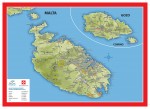
Malta
Area 122 square mi (316 square km) Population 427,400 2014 Capital Valletta Highest Point 830 ft (253 m) Lowest Point 0 m GDP $9.643 billion 2013 Primary Natural Resources globigerina limestone, petroleum, tourism. THE COUNTRY OF MALTA, which calls itself the Repubblika Ta' Malta, is an archipelago made up of five islands: Malta, Gozo, Comino, […]
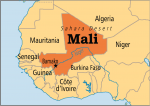
Mali
Area 478,640 square mi (1,240,000 square km) Population 17.09 million (2014) Capital Bamako Highest Point 3,789 ft (1,155 m) Lowest Point 75 ft (23 m) GDP $12.07 billion (2014) Primary Natural Resources gold, phosphates, kaolin, salt, limestone. A LANDLOCKED REPUBLIC and the largest country in West Africa, Mali is bordered by ALGERIA to the northeast, […]
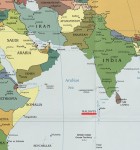
Maldive Islands
Area 115 square mi (300 square km) Population 357,400 2014 Capital Male Highest Point 7.8 ft (2.4 m) Lowest Point 0 m GDP $3.032 billion 2014 Primary Natural Resources coconuts, corn, sweet potatoes, fish, tourism. THE COUNTRY OF THE Maldive Islands is located in southern Asia, in the INDIAN OCEAN, as a group of atolls […]

Malaysia
Area 127,316 square mi (329,750 square km) Population 29.90 million 2014 Capital Kuala Lumpur Highest Point 13,450 ft (4,100 m) Lowest Point 0 m GDP $326.9 billion 2014 Primary Natural Resources tin, petroleum, timber, copper, iron ore. MALAYSIA IS LOCATED in the heart of Southeast Asia and is divided into two geographical sections: Peninsular Malaysia […]
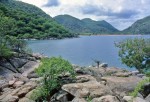
Malawi, Lake
LAKE MALAWI IS LOCATED in southeastern Africa lying within the crease where the eastern and western branches of the Great Rift Valley meet. According to the Center of Great Lakes Studies, Lake Malawi is the ninth-largest lake in the world by area and the fifthlargest lake in the world by volume. Malawi is the third-largest […]
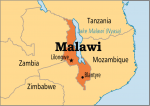
Malawi
Area 45,745 square mi (118,480 square km) Population 16.70 million (2014) Capital Lilongwe Highest Point 9,843 ft (3,002 m) Lowest Point 105 ft (37 m) GDP $4.258 billion (2014) Primary Natural Resources almost entirely agricultural. MALAWI IS A SMALL, landlocked country in central southeastern Africa. It is about the size of LOUISIANA or somewhat larger […]
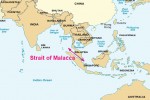
Malacca Straits
A PLAQUE IN THE gardens of the sultan's palace in Melaka reads: “Whoever is lord of Malacca has his hand on the throat of Venice.” For centuries this passage of water, 620 mi (1,000 km) long, connecting the INDIAN OCEAN and the South China Sea, running generally northwest to southeast, lived up to this reputation […]

Maine
MAINE IS THE easternmost state in the UNITED STATES and the northernmost of the 48 contiguous states. It is bounded to the east and south by the ATLANTIC OCEAN, to the northeast by the Canadian Province of New Brunswick, and to the northwest by the Canadian Province of Quebec. To the west, Maine is bordered […]

Magna Graecia
MAGNA GRAECIA (or “Greater GREECE”) was the geographic expression of Greek colonization originating from many different Greek cities. It was a process that began in the 7th century B.C.E., largely because of overpopulation. Competing city-states such as Sparta, Corinth, and Athens began to found new cities (colonies) that, in turn, became centers of an economically […]
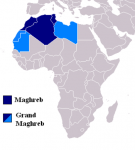
Maghreb
BROADLY DEFINED, the Maghreb is the triangular region of northwest Africa bounded by the ATLAS MOUNTAIN ranges, the ATLANTIC OCEAN from the border of western SAHARA to the Strait of Gibraltar, and the MEDITERRANEAN SEA from the Strait of Gibraltar to the northeast of LIBYA. Politically, the Maghreb includes the countries of MOROCCO, ALGERIA, TUNISIA and […]

Magellan, Ferdinand (1480–1521)
FERDINAND MAGELLAN, one of the most distinguished explorers in world history, was born in to a middle-class Portuguese family. In his youth, Magellan was awed by Christopher Columbus's seafaring adventures, and he developed a strong interest in the sea and enlisted in the navy in 1505. While serving as a naval officer, Magellan participated in […]

Madrid
WITH A POPULATION of 3,092,759 and crossed by the Manzanares River, Madrid is the capital and largest city in SPAIN. Located approximately at the center of the Iberian Peninsula, at the foot of the Sierra de Guadarrama, Madrid has a dry continental climate, with hot summers and cool winters. After enduring conquest by the Moors […]

Madagascar
Area 364,500 square mi (587,040 square km) Population 23.57 million (2014) Capital Antananarivo Highest Point 9,435 ft (2,876 m) Lowest Point 0 m GDP $10.59 billion (2014) Primary Natural Resources chromite, coal, bauxite, salt, quartz. MADAGASCAR, THE WORLD'S fourth-largest island, after GREENLAND, New Guinea, and BORNEO, is located 250 mi (400 km) off the southeast […]
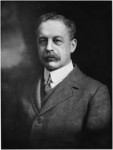
Mackinder, Halford J. (1861–1947)
HALFORD JOHN MACKINDER was born on February 15, 1861, in Gainsborough, a small port and market town at the river Trent in England. He was the eldest of six children born to Dr. Draper and Mrs. Fanny Anne Mackinder. His father was well educated and trained as a scientist. It was he who taught Mackinder […]
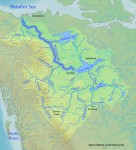
Mackenzie-Peace River
THE MACKENZIE-PEACE River system is made up of the Mackenzie and Peace rivers. Located in western CANADA, this is the 10th-longest river system in the world, at 2,635 mi (4,240 km). Sir Alexander Mackenzie, a Canadian explorer, discovered the river in 1789 and it was named for him. By itself, the Mackenzie River is the […]
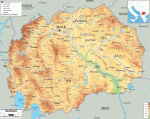
Macedonia (FYROM)
Area 9,781 square mi (25,333 square km) Population 2.076 million 2014 Capital Skopje Highest Point 9,085 ft (2,753 m) Lowest Point 165 ft (50 m) GDP $11.32 billion 2014 Primary Natural Resources chromium, lead, zinc, manganese. THE REPUBLIC OF Macedonia is a country in the southern Balkans but covers only part of the larger historical […]

Macau
MACAU IS LOCATED in the southern part of CHINA's Guangdong Province, near the tip of the peninsula formed by Pearl River on the east and Xinjiang River on the west. Macau is situated 37 mi (60 km) west of HONG KONG and comprises the Macau Peninsula and the islands of Taipa and Coloane. Macau has […]

Luzon
THE ISLAND OF LUZON is the largest and most populous island in the PHILIPPINE archipelago (17th largest in the world), the center of Philippine political and economic life, and the site of the capital city, MANILA. With roughly 42 million people occupying a total land area of 40,420 square mi (104,688 square km)—roughly the size […]
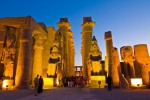
Luxor
LUXOR IS LOCATED on the banks of the middle reaches of the NILE RIVER, in Qena governorate, eastcentral EGYPT. Approximately, 440 mi (700 km) south of Cairo, it is a bustling city with a population of about 150,000. As a modern city, it caters to tourists who are attracted to the famous archaeological sites that […]
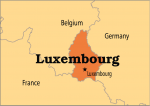
Luxembourg
Area 998 square mi (2,586 square km) Population 556,100 2014 Capital Luxembourg Highest Point 1,834 ft (559 m) Lowest Point 436 ft (133 m) GDP $60.13 billion 2013 Primary Natural Resources arable land. LUXEMBOURG IS a small LANDLOCKED western European country, within the EUROPEAN UNION (EU), and given its small population size, the country does […]

Louisiana Purchase
THE LOUISIANA PURCHASE (1803) included all of the present-day states of ARKANSAS, OKLAHOMA, MISSOURI, KANSAS, IOWA, and NEBRASKA, as well as parts of MINNESOTA, SOUTH DAKOTA, NORTH DAKOTA, MONTANA, WYOMING, COLORADO, NEW MEXICO, TEXAS, and, of course, LOUISIANA. The area is approximately one-third of the continental UNITED STATES. Initially, it included portions of CANADA—southern Manitoba, […]

Louisiana
SITUATED AT THE MOUTH of the MISSISSIPPI RIVER on the coast of the Gulf of Mexico, Louisiana and its people have long been influenced by the intersection of these two major water features. The physical geography of Louisiana can be examined in terms of its five natural regions: the Coastal Marsh; the Mississippi Flood Plain; […]

Los Angeles
LOS ANGELES, CALIFORNIA, is the second most populous city in the UNITED STATES with an estimated 2002 population of approximately 3.8 million. Los Angeles (also known as L.A.) is the principal city of a metropolitan region with a population of over 12 million. Located in the Los Angeles basin, the city is 470 square mi […]

Lop Nor
ALSO SPELLED Lob-Nor, Lop Nur, and Lop Nuur, this name invites confusion as it has been applied to a lake (actually two), a village, and a region in eastern XINJIANG province (CHINA). Lop is also the name of a “great desert” and a “large town” that Marco Polo mentioned and Faxian described. The city of […]
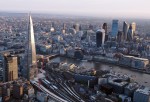
London
LOCATED ON THE Thames River in southwestern England in the British Isles, London is the capital of England and the UNITED KINGDOM. The history of London can be traced back nearly 2,000 years to its founding as Londinium in 50 C.E. by the Romans. Much debate has occurred as to the exact type of Roman […]
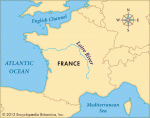
Loire River
TO MANY PEOPLE, the Loire River defines FRANCE. It is the country's largest river and draws together its different regions, east and west, north and south. The Renaissance chateaus along its lower course are the second-largest tourist draw after Paris, and the river provides water and transportation for the nation's agricultural center. From its origins […]

loess
LOESS (PRONOUNCED “LUSS”) is a very fine light soil, often buff, yellow, or gray in color. The word stems from the German word loss or “loose,” and loess is generally easily eroded by water or blown by wind. Major loess deposits are found in Shaanxi, CHINA, in some of the U.S. plains states, notably western […]
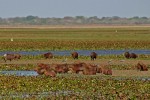
llanos
ALSO KNOWN AS the Orinoco River plains, the llanos of COLOMBIA and VENEZUELA are the northernmost section of the central lowlands of South America. The llanos are formed by a large geologic depression that once was an arm of the sea. This location is an alluvial basin between the northern ANDES MOUNTAINS and the Guyana […]
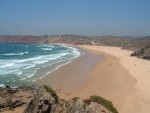
littoral
THE WORD LITTORAL comes from the Latin root littus, or “seashore.” The littoral zone of a lake or ocean refers to the shallow waters closest to shore. In lakes, this is the zone dropping from the shoreline to roughly 10 ft (3 m) deep where there is enough sunlight for rooted plants to exist. Only […]
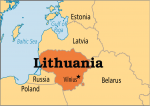
Lithuania
Area 25,173 square mi (65,200 square km) Population 2.929 million 2014 Capital Vilnius Highest Point Juozapine/Kalnas 954 ft (292 m) Lowest Point 0 m GDP $48.17 billion 2014 Primary Natural Resources peat, arable land. THE REPUBLIC OF Lithuania in northern Europe is a lowland country that borders LATVIA to the north, BELARUS to the east […]

Lisbon
WITH A metropolitan-area population of 2,682,687, Lisbon is the capital and largest city in PORTUGAL. It is located on the right bank of the Tagus River, where it forms a large estuary providing a natural safe harbor close to the ATLANTIC OCEAN. The city evolves over a series of hills and enjoys a Mediterranean climate, […]
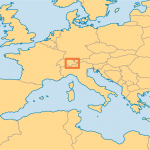
Liechtenstein
Area 62.4 square mi (160 square km) Population 37,290 2014 Capital Vaduz Highest Point 8,577 ft (2,599 m) Lowest Point 1,419 ft (430 m) GDP $5.488 billion 2012 Primary Natural Resources hydroelectric potential. ONE OF WESTERN Europe's five microstates, the story-book principality of Liechtenstein is in reality one of the few “absolutist” states in the […]
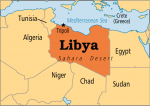
Libya
Area 679,362 square mi (1,759,540 square km) Population 6.259 million (2014) Capital Tripoli Highest Point 7,437 ft (2,267 m) Lowest Point -154 ft (-47 m) GDP $41.12 billion (2014) Primary Natural Resources crude oil, petroleum products. A RELATIVELY LARGE country, similar in size to the state of ALASKA, Libya largely consists of broad rolling deserts, […]
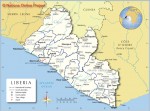
Liberia
Area 43,000 sq. mi. (111,370 sq. km) Population 4.397 million (2014) Capital Monrovia Highest Point 4,540 ft (1,383 m) Lowest Point 0 m GDP $2.027 billion (2014) Primary Natural Resources rubber, coffee, cocoa, timber. LIBERIA, “LAND OF THE FREE,” in western Africa, borders the north ATLANTIC OCEAN, between COTE D'IVOIRE and SIERRA LEONE. It has 10 […]

Lewis and Clark
IN 1804, MERIWETHER Lewis and William Clark began an expedition across the newly acquired LOUISIANA PURCHASE territory. These two army captains were chosen by the American president, Thomas Jefferson, to explore new land the UNITED STATES had purchased from FRANCE one year earlier, and to find a direct water route across the nation. For a […]
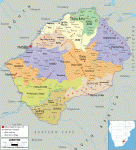
Lesotho
Area 11,720 square mi (30,355 square km) Population 2.109 million (2014) Capital Maseru Highest Point 11,425 ft (3,482 m) Lowest Point 4,265 ft (1,301 m) GDP $2.088 billion (2014) Primary Natural Resources water, diamonds, minerals. LESOTHO IS LOCATED literally within SOUTH AFRICA: This small southern African country is landlocked and surrounded on all sides by […]
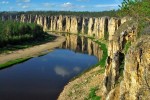
Lena River
THE LENA RIVER is one of Russia's great northern rivers, draining an area of 899,641 square mi (2,306,772 square km) and encompassing a region rich in wildlife and natural resources, including one of the world's largest deposits of gold. This is also one of the most inhospitable regions on the planet, with extremes of temperature […]

leeward and windward
THE TERMS leeward and windward are used in a number of ways to describe specific places, physical features, and climatic processes. In one sense, windward and leeward generally refer to the location of a place relative to the prevailing wind direction. A windward location is one that is exposed to the prevailing winds. Conversely, a […]
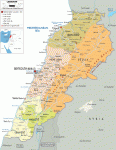
Lebanon
Area 4,015 square mi (10,400 square km) Population 4.547 million 2014 Capital Beirut Highest Point 10,131 ft (3,088 m) Lowest Point 0 m GDP $45.73 billion 2014 Primary Natural Resources limestone, iron ore, salt, water, arable land. LEBANON, ONE OF the world's smallest countries, is on the eastern shore of the MEDITERRANEAN SEA. SYRIA is […]

Law of the Sea
THE LAW OF THE SEA is a compilation of international and national laws regulating the demarcation of areas of maritime jurisdiction appertaining to maritime states. While its origins were military and defensive today it focuses on respective rights of resource exploitation—oil and minerals as well as fisheries. The importance of international innocent passage via geopolitical […]
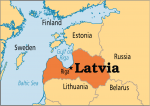
Latvia
Area 24,937 square mi (64,589 square km) Population 1.990 million 2014 Capital Riga Highest Point Gaizinkalns 1,017 ft (311 m) Lowest Point 0 m GDP $31.92 billion 2014 Primary Natural Resources peat, limestone, dolomite, amber. ON THE EASTERN shore of the Baltic Sea in northern Europe, the Republic of Latvia is a flat country that […]

latitude and longitude
LATITUDE AND LONGITUDE are points on lines that graph the Earth and allow cartographers and others, by assigning measurements to the lines, to fix the location of any place. Latitude lines run east and west and are also called parallels; longitude lines run north and south and are known as meridians. The measurements for both […]
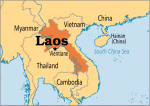
Laos
Area 91,429 square mi (236,800 square km) Population 5,921,545 Capital Vientiane Highest Point 9,240 ft (2,817 m) Lowest Point 230 ft (70 m) GDP per capita $326 Primary Natural Resources timber, hydropower, gypsum. LAOS, THE ONLY landlocked (without any ocean coastline) Southeast Asian country, is one of the poorest of the world, with 40 percent […]
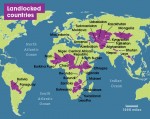
landlocked
APPROXIMATELY ONE-FIFTH of the world's countries have no access to the oceans or ocean-connected seas, classifying them as landlocked. Today, there are 42 landlocked countries, including LIECHTENSTEIN and UZBEKISTAN, considered doubly landlocked because they have no access to the oceans and neither does any country that surrounds them. The main issues to consider with a […]
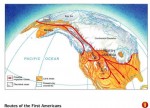
land bridge
IN GEOMETRICAL TERMS, a square also qualifies as a rectangle—a four-sided plane figure with four right angles—but a rectangle does not always meet the criteria to be a square—a figure having four equal sides. Such is the case with land bridges and isthmuses. An isthmus qualifies as a land bridge—a strip of land linking two […]
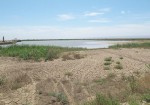
lacustrine plain
ALSO CALLED A lake plain, a lacustrine plain is an area created out of deposition largely related to the past existence of lakes in the area, although in some cases, the original lakes still exist, having shrunk in size over time. Lacustrine refers to the condition of being affected by a lake or several lakes. […]

Kyushu Mountains
THE KYUSHU MOUNTAINS form the high, elevated central portion of the Japanese island of Kyushu, the southernmost of JAPAN's four main islands. Running roughly diagonally across the island, northeast to southwest, they cut Kyushu into a northern and southern sector. These sectors differ markedly from each other in many ways, from geology to economics: the […]
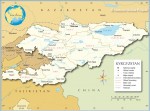
Kyrgyzstan
Area 76,641 square mi (198,500 square km) Population 5.834 million 2014 Capital Bishkek Highest Point 24,407 ft (7,439 m) Lowest Point 433 ft (132 m) GDP $7.404 billion 2014 Primary Natural Resources hydropower, gold, coal, oil. LANDLOCKED AND MOUNTAINOUS, the Kyrgyz Republic achieved its independence in 1991 following the collapse of the Soviet Union. Kyrgyzstan […]
Kyrghiz Steppes
THE KYRGHIZ STEPPES is a historic name for the region currently forming central and eastern KAZAKHSTAN. It is a broad plain with few to no trees and little moisture. It is a land of horses and cattle and wideopen plains. The name is confusing, and thus used less frequently today, since the actual Republic of […]

Kuwait
Area 6,880 square mi (17,280 square km) Population 3.753 million 2014 Capital Kuwait City Highest Point 1,004 ft (306 m) Lowest Point 0 m GDP $175.8 billion 2013 Primary Natural Resources petroleum, fish, shrimp, natural gas. KUWAIT IS A COUNTRY in the MIDDLE EAST, bordering the PERSIAN GULF, between IRAQ and SAUDI ARABIA. The establishment […]
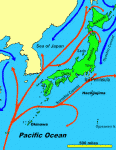
Kuroshio Current
THE KUROSHIO IS a warm northeasterly ocean current off the coast of JAPAN. This current is also called the gulf stream of the Pacific or Japan Current. Kuroshio means “the black stream” in Japanese, named after the deep ultramarine color of the high salinity water, which is found flowing north of the current's axis. The […]

Kosciusko, Mount
MOUNT KOSCIUSKO (also spelled “Kosciuszko”) is the highest point (7,310 ft or 2,228 m) in mainland AUSTRALIA. Named after the Polish military leader Thaddeus Kosciuszko (1746–1817), the mountain is a core component of the Kosciuszko National Park in the state of New South Wales. One of the Australian Alps national parks, the park is a […]
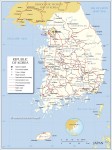
Korea, South
Area 38,294 square mi (98,190 square km) Population 50.42 million 2014 Capital Seoul Highest Point 6,435 ft (1,950 m) Lowest Point 0 m GDP $1.410 trillion 2014 Primary Natural Resources coal, tungsten, lead, hydropower potential. AN ECONOMIC GIANT of East Asia, South Korea's economy took off after the Korean War of the 1950s. South Koreans […]
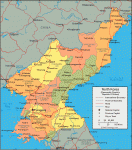
Korea, North
Area 46,541 square mi (120,540 square km) Population 25.03 million 2014 Capital P'yongyang Highest Point 9,055 ft (2,744 m) Lowest Point 0 m Primary Natural Resources coal, lead, tungsten, zinc, graphite. THE DEMOCRATIC People's Republic of Korea, North Korea, is one of the world's most politically isolated countries. Separated from its sister nation (South KOREA) […]

Kopet Mountains
THE SMALL RANGE of mountains that forms the northern boundary of IRAN with TURKMENISTAN is known as the Kopet Dag, or Kopet Mountains (Kopetdag in Turkmen). The range stretches for 400 mi (645 km), from a point near the CASPIAN SEA to the Harirud River in the east, which flows from northwestern AFGHANISTAN to a […]
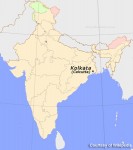
Kolkata (Calcutta)
CALCUTTA, RECENTLY renamed Kolkata after its original village site of Kolikata and an on-site temple of goddess Kali, was founded by Job Charnock in 1690 on behalf of the British East India Company. The same location in northwestern INDIA was also a Portuguese and Dutch encampment site during the mid-17th century. It is, however the […]
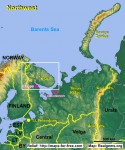
Kola Peninsula
THE KOLA PENINSULA IS one of RUSSIA's regions of great contrast: at once an area of stark natural beauty and of severe ecological danger; rich in minerals, but one of Russia's poorest regions; and an area that is both closely linked to the concerns of Western Europe and strictly isolated from the outside world. The […]
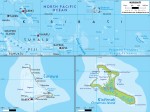
Kiribati
Area 313 square mi (811 square km) Population 110,500 2014 Capital Bairiki Highest Point Banaba Island 243 ft (81 m) Lowest Point 0 m GDP $166.8 million 2014 Primary Natural Resources phosphate (depleted by 1979), copra. THE REPUBLIC OF Kiribati consists of 33 atolls straddling the equator and the INTERNATIONAL DATE LINE. The country is […]

Kilimanjaro, Mount
A MAJESTIC ROCKY GIANT, Mount Kilimanjaro is crowned by an icecap, impressively dominating the scenery. Mount Kilimanjaro towers above the Masai Steppe or the Great Rift Valley, which is believed to be the site of the origin of humankind. Pictures that shaped our imagination of East Africa are firmly connected to Kilimanjaro. The highest mountain […]
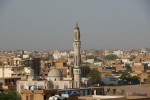
Khartoum
KHARTOUM IS THE capital city and administrative region of the Republic of the SUDAN, located at the confluence of the Blue and White NILE rivers. Khartoum is the second-largest city in North Africa, with an estimated population of 2.5 million in the city proper, and up to 7 million in the Greater Khartoum district, which […]
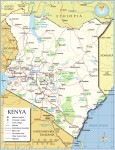
Kenya
Area 224,900 square mi (582,488 square km) Capital Nairobi Population 44.86 million (2014) Highest Point 17,058 ft (5,199 m) Lowest Point 0 m GDP $60.94 billion (2014) Primary Natural Resources coffee, tea, corn, vegetables, livestock. KENYA, WHICH LIES astride the equator on the eastern coast of Africa, is bordered in the north by SUDAN and […]

Kentucky
NICKNAMED FOR the bluegrass that covers much of this U.S. state, and known for its whiskey and for the Kentucky Derby that takes place annually at Churchill Downs in Louisville, the Commonwealth of Kentucky was named for the Kentucky River, which was thought to have been named from the Iroquoian word(s) for either “meadowland” or […]
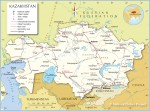
Kazakhstan
Area 1,049,155 square mi (2,717,300 square km) Population 17.29 million 2014 Capital Astana Highest Point 23,084 ft (6,995 m) Lowest Point -436 ft (-132 m) GDP $212.2 billion 2014 Primary Natural Resources petroleum, natural gas, coal. THE REPUBLIC OF Kazakhstan occupies the center of the Eurasian supercontinent, the second largest of the former Soviet republics […]

Kashmir
KASHMIR IS THE name given to the Vale of Kashmir, a valley situated on the Jhelum River between the Pir Panjal range and the main range of the HIMALAYAS. By extension, the name is used to refer to the Indian state of Jammu and Kashmir and to a portion of the old preindependence territory that […]
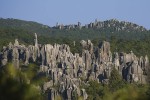
karst
KARST IS A TERRAIN characterized by sinkholes, caves, and disappearing streams that have been created by chemical weathering in thick carbonate bedrock. Karst is named for the Krs Plateau along the ADRIATIC SEA and comes from an old Slavic word meaning “barren land.” In the karst hydrologic cycle, moving water slowly dissolves away the limestone […]
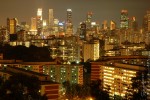
Karachi
AFTER PAKISTAN'S independence, Karachi was the national capital for 13 years (1947–60). In 2004, it was the capital of the Province of Sind. With a population of a little over 11 million, Karachi is the 16th largest metropolis of the world. Karachi has a semidesert climate with a summer mean temperature of 80 degrees F […]

Kansas
LOCATED MIDWAY between the east and west coasts of the UNITED STATES, Kansas has a unique position as a geographic hub. Despite images to the contrary, Kansas has a unique geography as a transition between the historic farmlands of the east and the open range of the west. The land rises gently from 679 ft […]